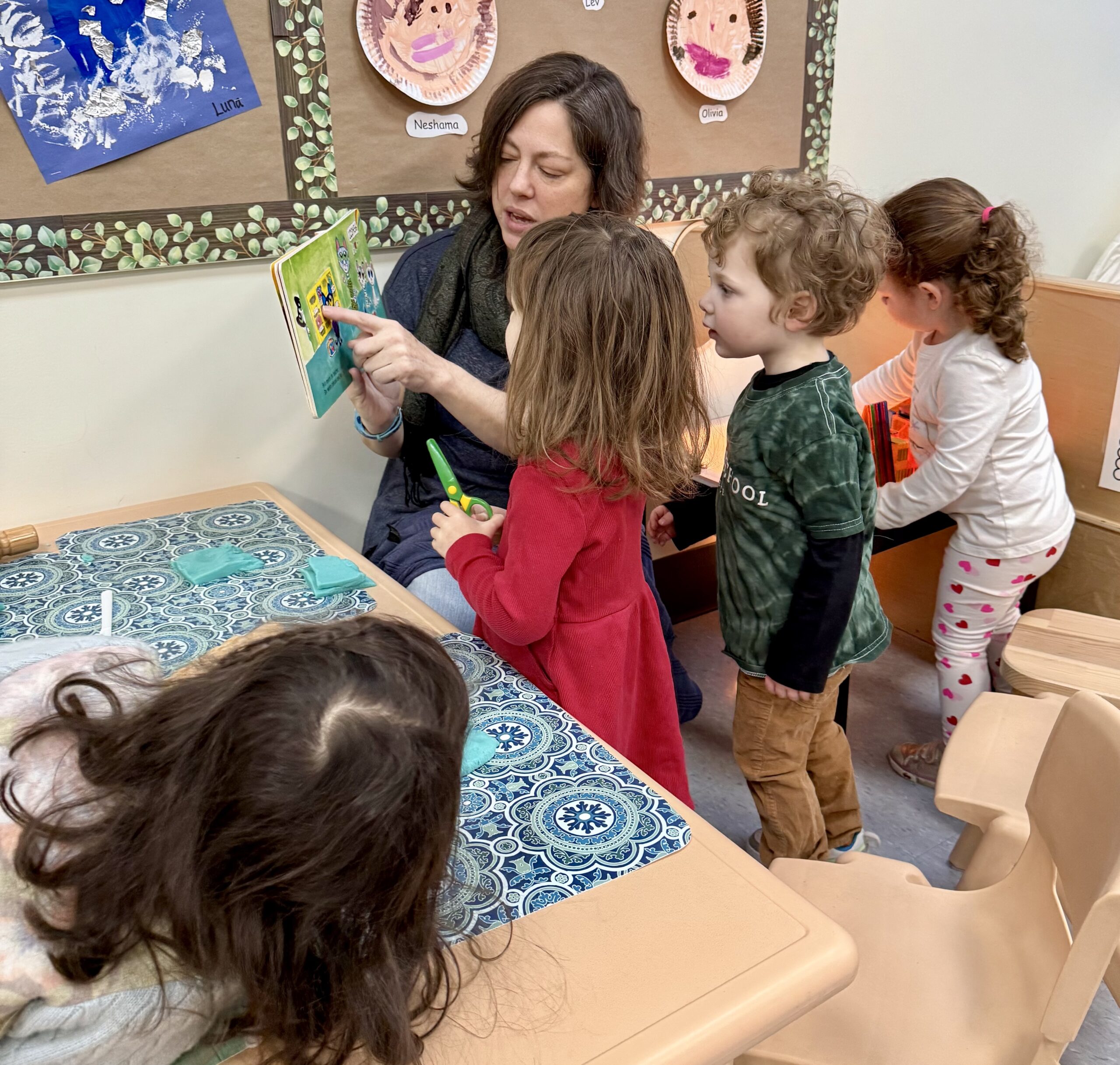Meeting all Students’ Needs
At the Jewish Community Day School of Rhode Island (JCDSRI), we are committed to fostering an inclusive and dynamic learning environment that empowers all students to thrive. Central to this commitment is our adoption of the Universal Design for Learning (UDL) framework, a revolutionary approach to teaching and learning that provides every student with an equal opportunity to succeed
while celebrating the uniqueness of each learner. UDL is founded on the principle that education should meet the diverse needs of all learners by providing flexibility in how students access information, engage with material, and demonstrate their understanding. This approach is especially impactful for students with learning and attention differences, while simultaneously enhancing learning opportunities for every child.

A Science-Based Approach to Learning
Grounded in neuroscience and supported by educational research, UDL recognizes that learning is as individual as a person’s fingerprints. The framework leverages insights from brain science to optimize teaching strategies by engaging three primary brain networks:
● Recognition (the WHAT of learning): Helping students gather and process information.
● Skills & Strategies (the HOW of learning): Encouraging students to plan, organize, and demonstrate their learning.
● Caring & Prioritizing (the WHY of learning): Motivating students to engage, persist, and find meaning in their education.
The Three Core Principles of UDL:
1. Representation: We provide multiple ways for students to access and understand subject matter. Whether through text, audio, video, or hands-on experiences, our educators ensure students can engage with materials in ways that resonate with their individual learning styles.
2. Action and Expression: At JCDSRI, students are given a variety of ways to express what they’ve learned. This might include traditional written tests, oral presentations, artistic projects, or collaborative group work, ensuring every child has the opportunity to communicate their understanding effectively.
3. Engagement: We recognize the importance of connecting learning to students’ lives, interests,
and goals. By ordering choices, incorporating play, and building movement and collaboration
into lessons, we create an environment where students are motivated and inspired to learn.
A Customized Approach to Curriculum Development
At JCDSRI, our educators design a curriculum that challenges and excites diverse learners, ensuring that learning goals, methods, materials, and assessments minimize barriers and maximize opportunities. The flexibility of UDL helps us create lessons that are as engaging as they are rigorous, cultivating both academic and emotional growth in our students. By embracing the UDL framework, we inspire our students to think critically, explore creatively, and develop the skills they need to become lifelong learners. Through this approach, we affirm that every child is capable of meaningful, joyful learning and is supported in their journey toward achieving their
fullest potential.

Benefits of Universal Design for Learning (UDL)
There are many benefits to using UDL in the JCDSRI classrooms. Some of the key benefits include:
1. Improved Learning Outcomes for All Students
When JCDSRI teachers use UDL principles in their instruction, students learn more and achieve better outcomes. UDL provides ways to meet the needs of all learners, including those who are traditionally marginalized or left behind.
2. Increased Engagement and Participation
UDL at JCDSRI helps to make learning more engaging and exciting for all students. When students are actively engaged in their learning, they are more likely to succeed.
3. Reduced Achievement Gaps by Universal Design for Learning
When all students at JCDSRI have access to high-quality instruction and materials, achievement gaps decrease. UDL helps to create a level playing field for all learners.
4. Provides Inclusive Learning Environment
UDL helps create a learning environment that is welcoming and inclusive for all students. Inclusivity is essential, as all students should feel comfortable and supported in their learning environment.
5. Eliminate Barriers
UDL helps to eliminate the barriers that many students face in their learning. This can include inaccessible materials, challenging tasks, and inappropriate instruction.
 Example of UDL in the Classroom at JCDSRI
Example of UDL in the Classroom at JCDSRI
Imagine this: Our second graders are expected to write an essay on the stages of butterfly metamorphosis.
Some students have seen butterflies grow through the different stages at a local science museum. These students are excited to share what they know. Other students don’t know anything about butterflies and are nervous about writing on this topic. And some students don’t like to write — they dread this activity from the moment you say “essay.”
In the class, we know there’s a wide range of enthusiasm, background, and skills among our students. When a teacher plans with this range in mind, one can approach the lesson in several ways.
The teacher could share a mini-lesson on butterfly metamorphosis and have students use a guided worksheet as they write. Or they could set up stations where students are grouped using flexible grouping around understanding of the topic, language ability, or reading level.
But take a step back. In any lesson or task, a teacher can anticipate this range of variability among their students. By utilizing the fundamentals of Universal Design for Learning, our JCDSRI teachers plan for this kind of variability in all of their lessons!